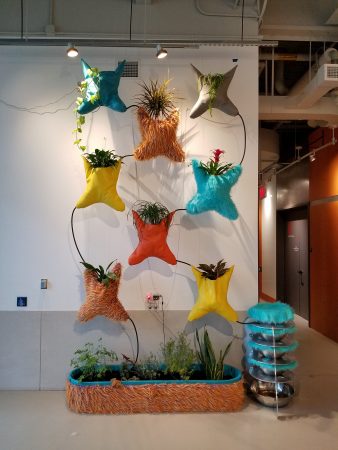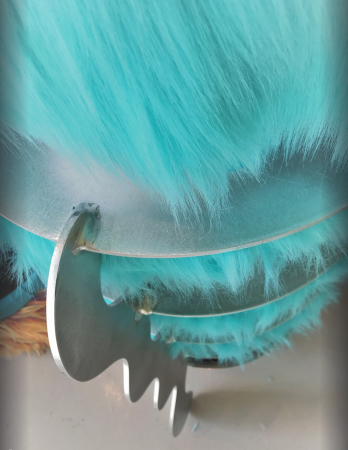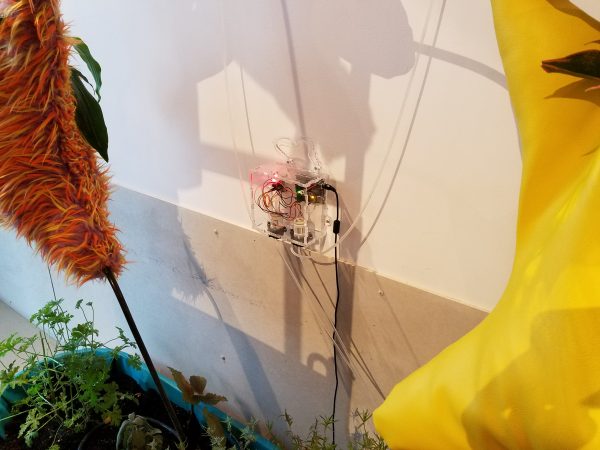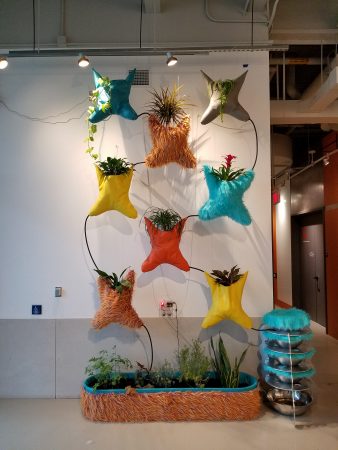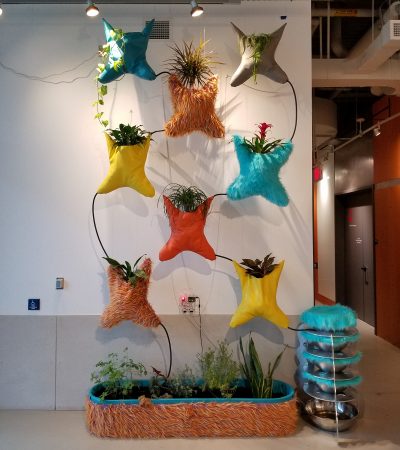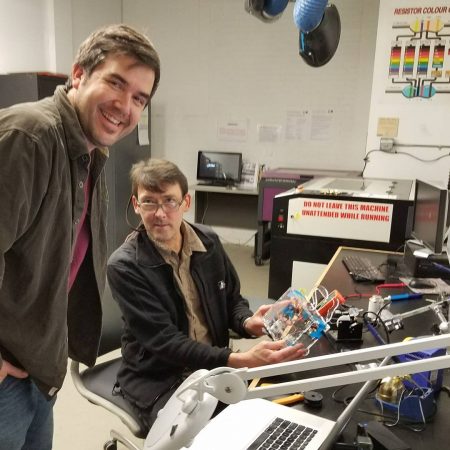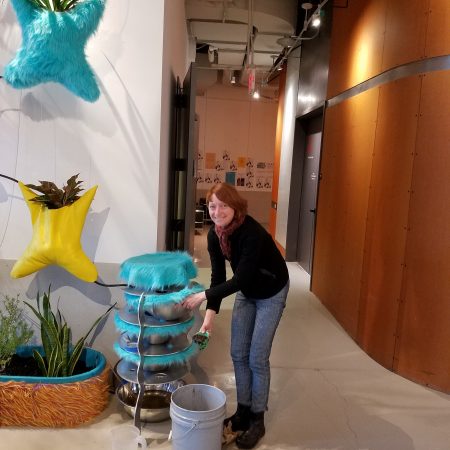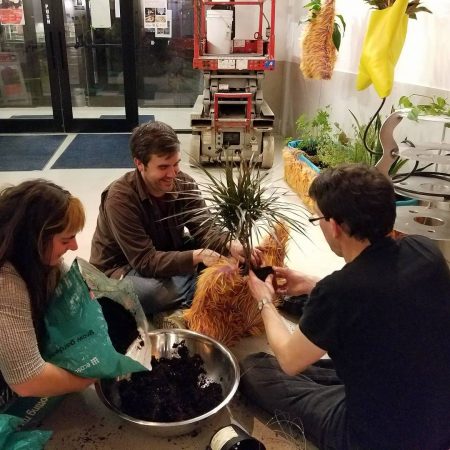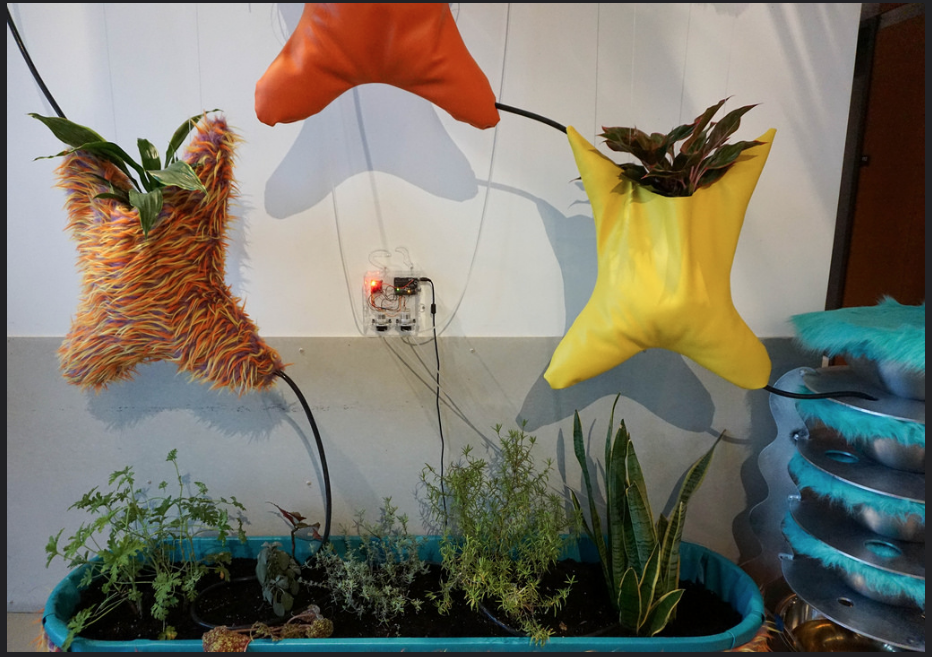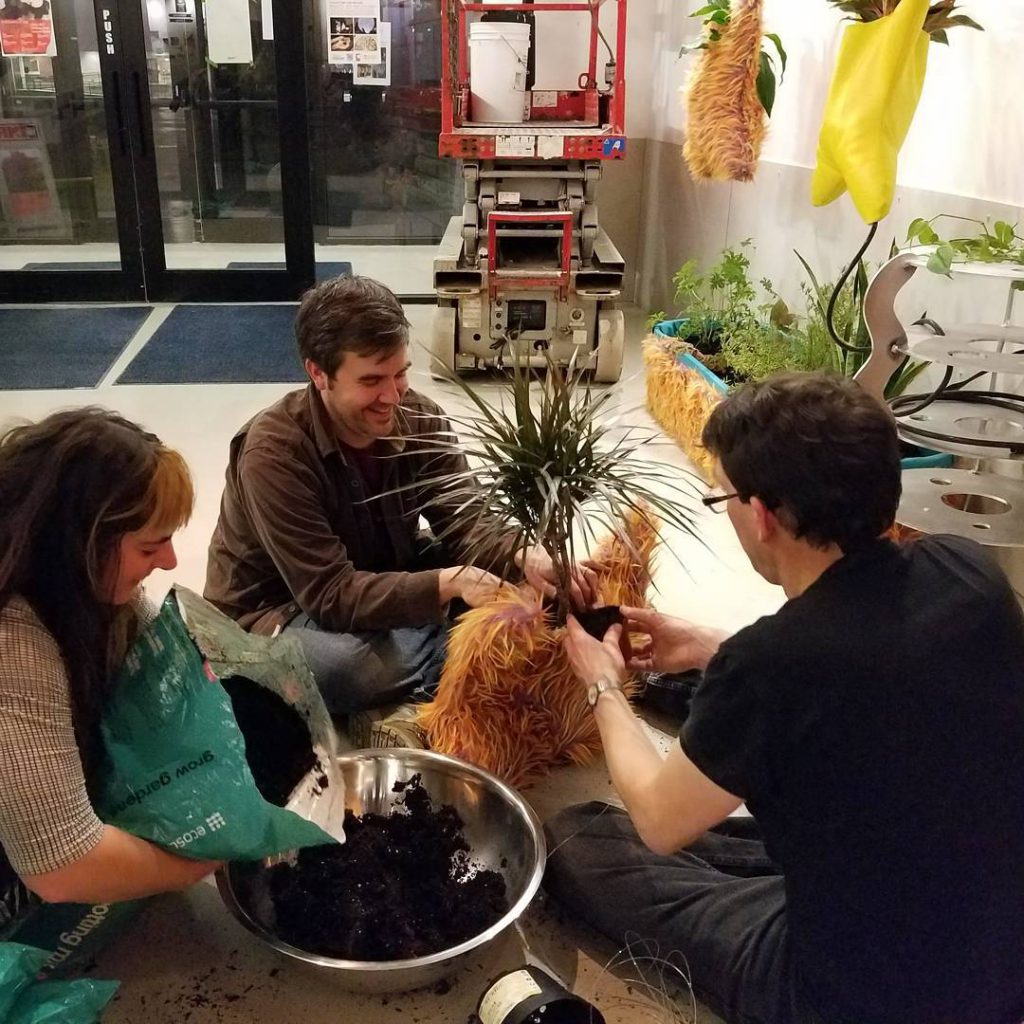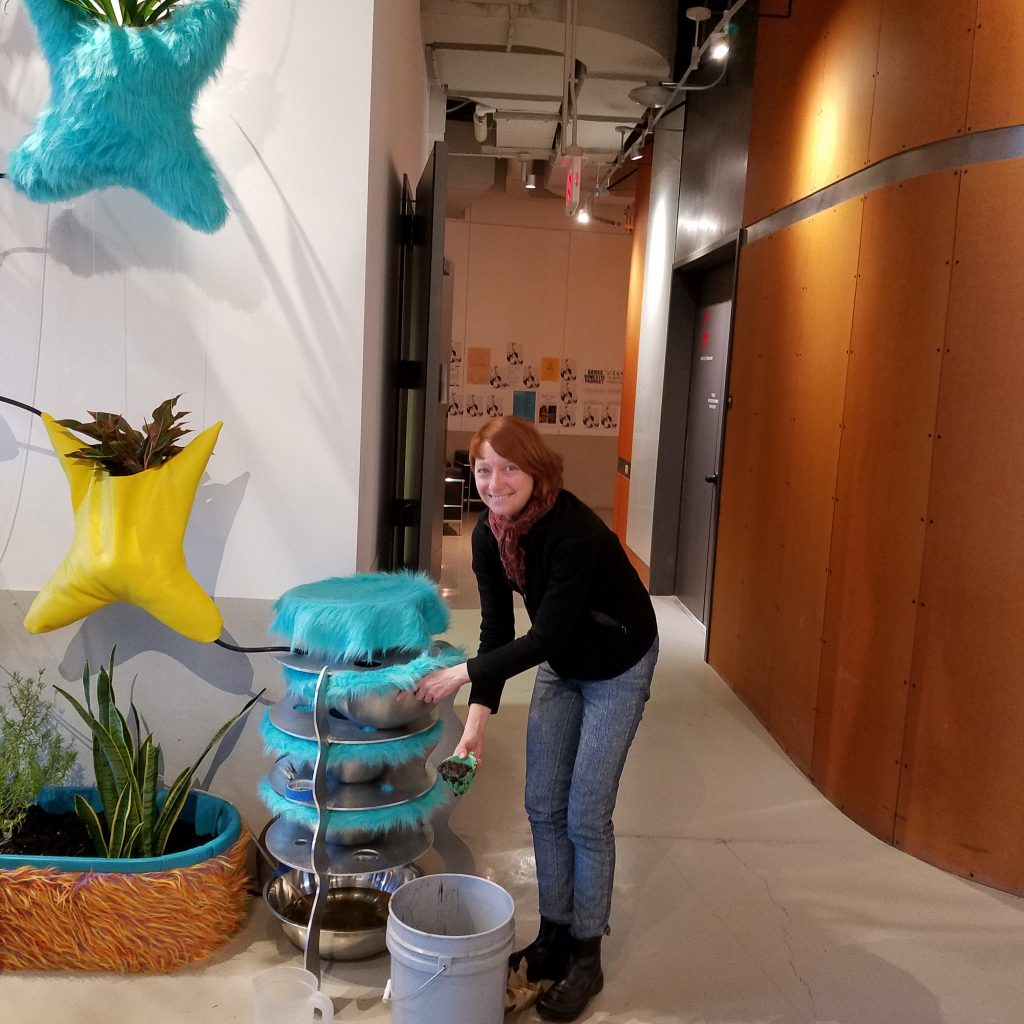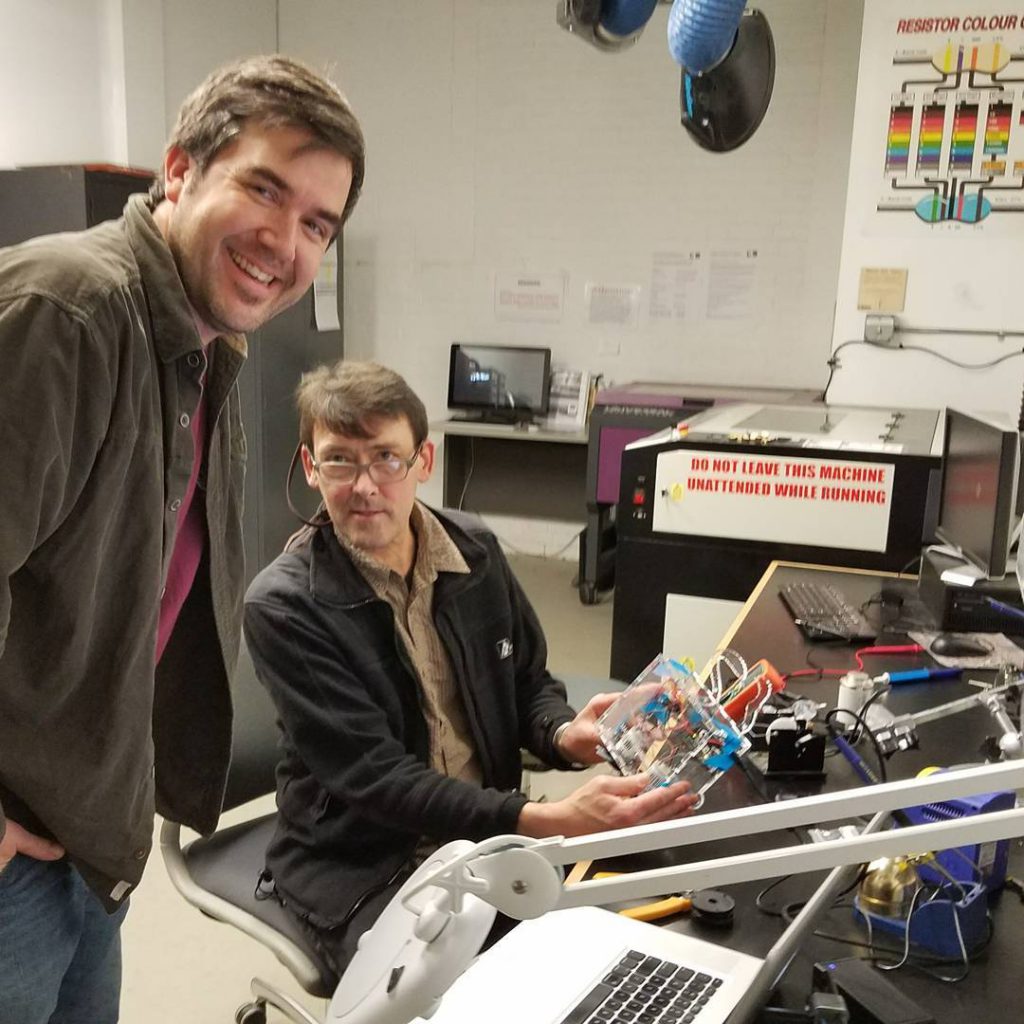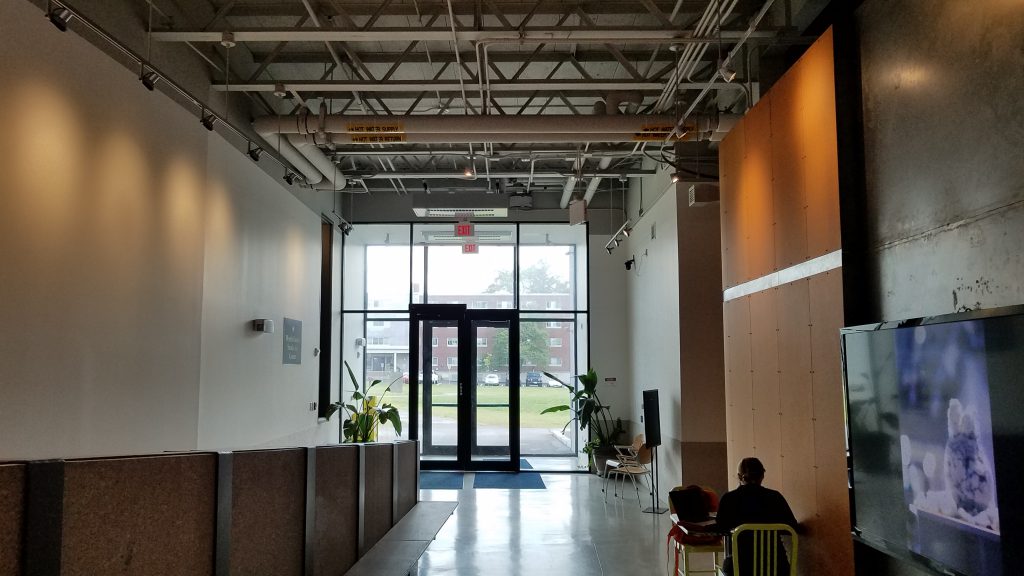Machine Garden lives!
Humans feed the worms food waste, the worms eat and feed the plant’s worm tea, the plants inhale human CO2 and exhale oxygen, the humans breathe fresh air, and you can hug the furry planters if you like. : )
Machine Garden is a new collaborative project in which plants, constructed, and sewn grow bags, worms, fungi, and machines will coexist in a state of symbiotic intertwining. This integrated system of plants, worms, and devices allows plant roots of various varieties to reach forward and enable fungi to communicate. Connected highways constructed of tubes allow worms to travel from plant to plant, enriching the soil.
The work is a collaborative project between Ken Rinaldo and Amy Youngs.
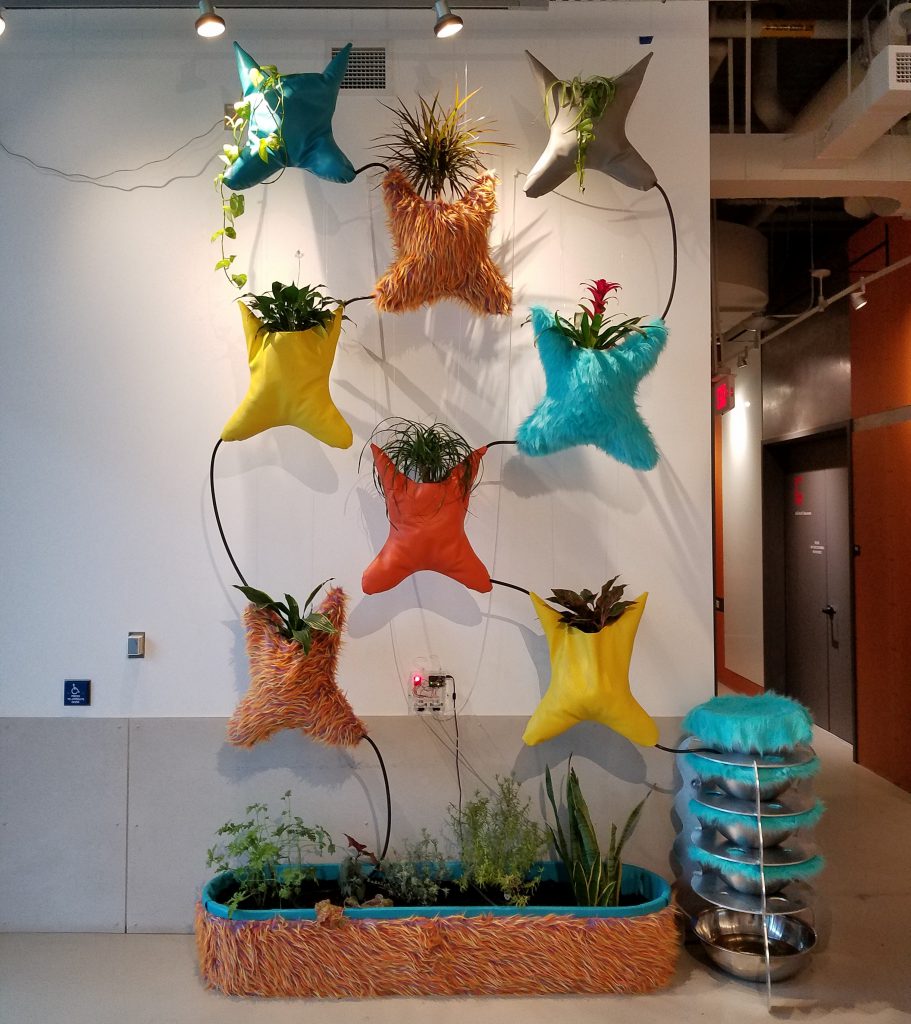
The work is a commission of the University of Maine, located in the lobby of the Wyeth Family Studio Art Center. The building houses the Innovative Media, Research and Commercialization Center at the University of Maine.
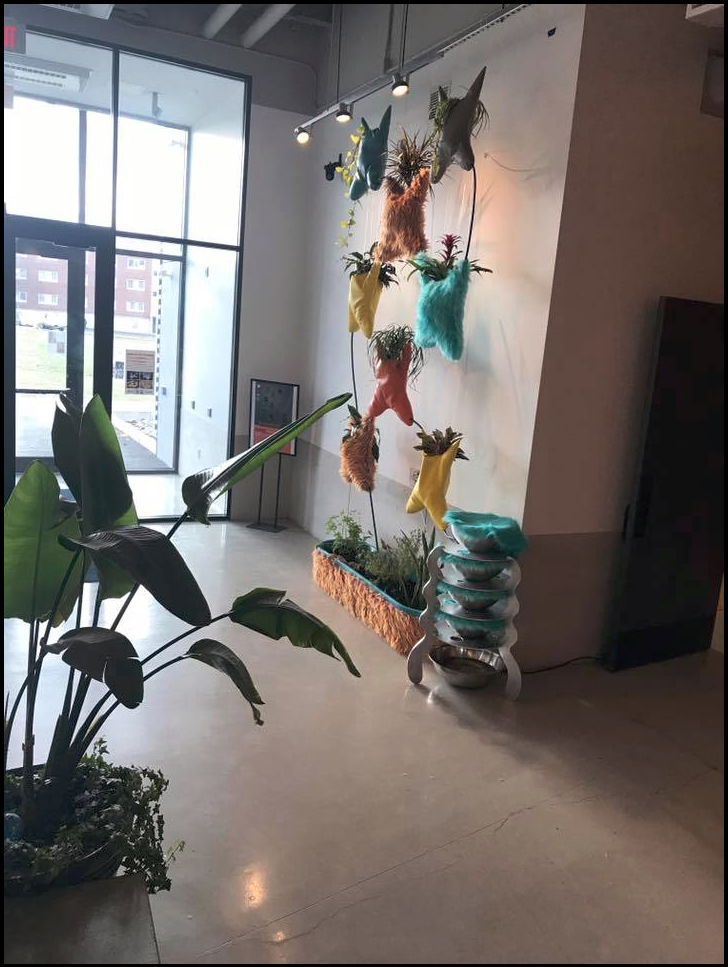
Water comes from the worm bin on the right side and is pumped to the sewn bags with drip irrigation via micro peristaltic pumps.
Food scraps from the local cafe in the building nourish both worms and plants. The plants in the space absorb carbon dioxide from the occupants of the buildings and provide fresh oxygen to humans working within.
These bags with plants serve as a vertical air filter removing toxins. Spider Plants (Chlorophytum comosum) can remove up to 560 µG/H of formaldehyde Xylene and toluene.
English Ivy (Hdererea helix) that does wonderfully in these grow bags removes up to 579 µG/H of benzene, 402-1120 µG/H of trichloroethylene, as well as Xylene and Toluene. Golden Pothos (Philodendron cordatum) can remove up to 353 µG/H of formaldehyde. 1
Amy Youngs is an excellent collaborator working on the worm hive.
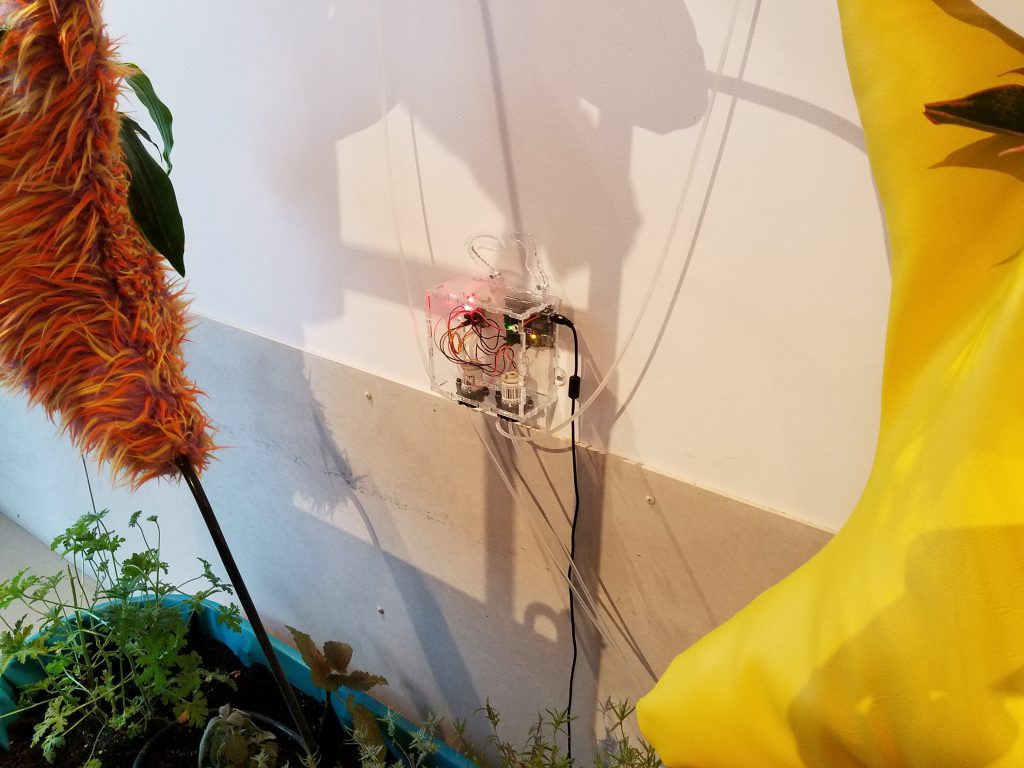
The plants will add moisture to the air and provide areas of warmth and visual focus to relax viewers as they enter and exit the building.
The worm bin will allow leachate from the worms to eat to add natural fertilizer to the indoor plants within the garden.
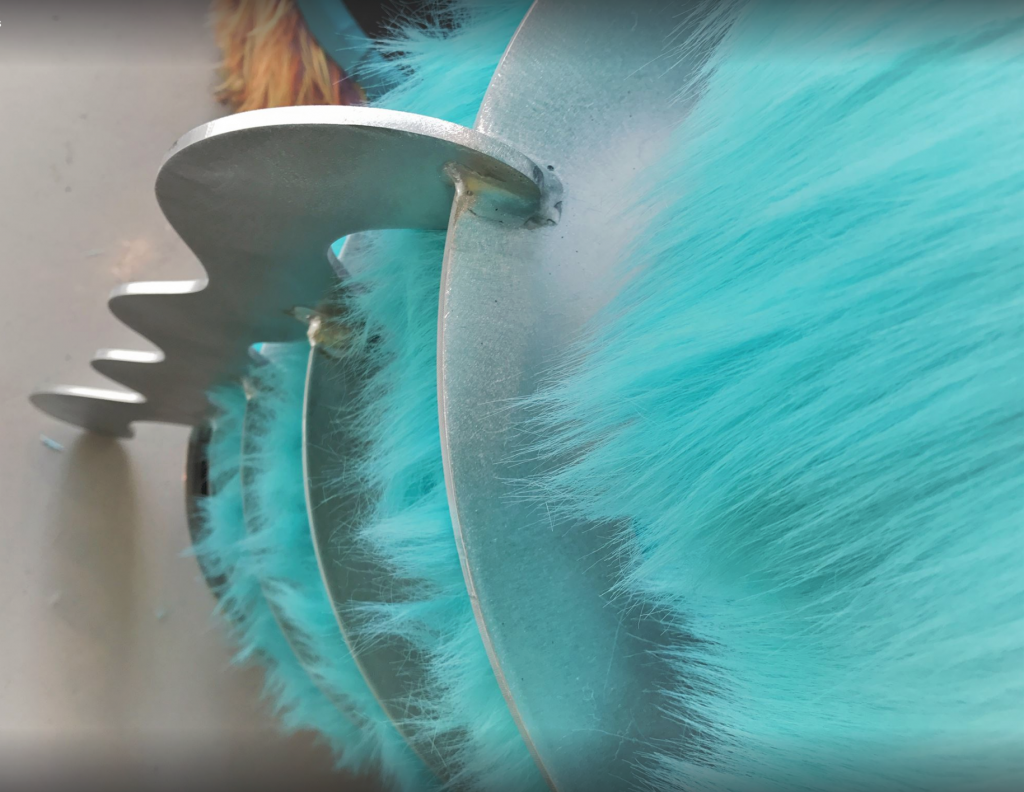
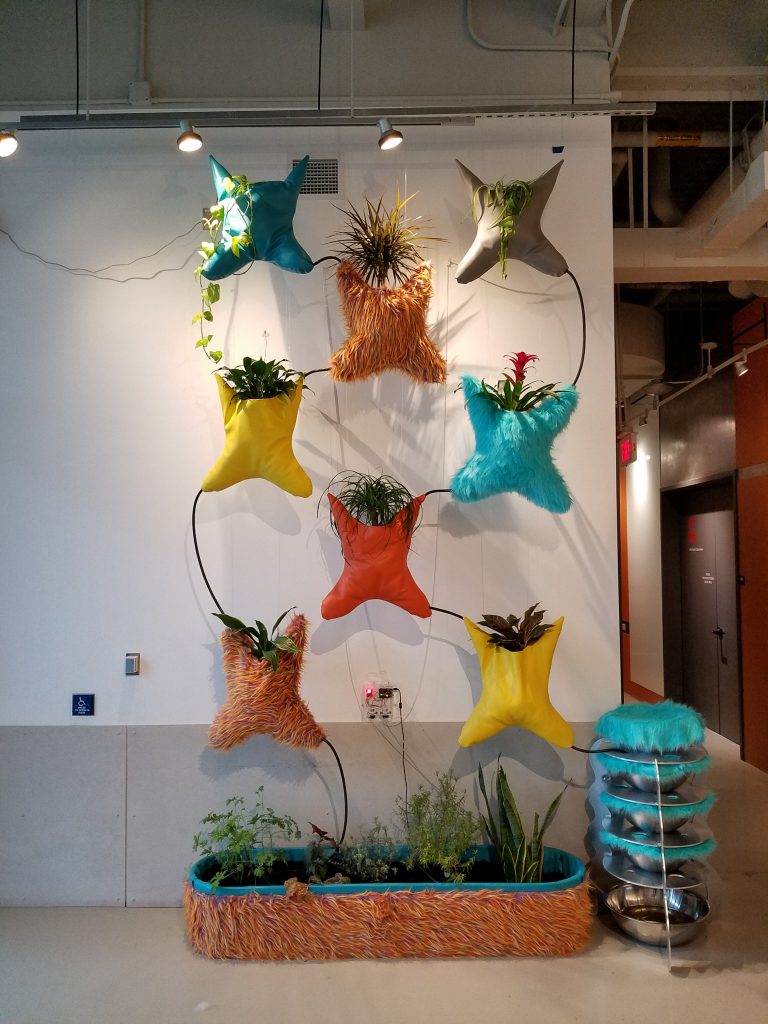
The garden has indoor varieties that add color and shape, integrating with the custom sculptural bags.
Various materials and processes were explored to allow the bags to remain moist and cool during hot summers and to keep all living worms and plants happy.
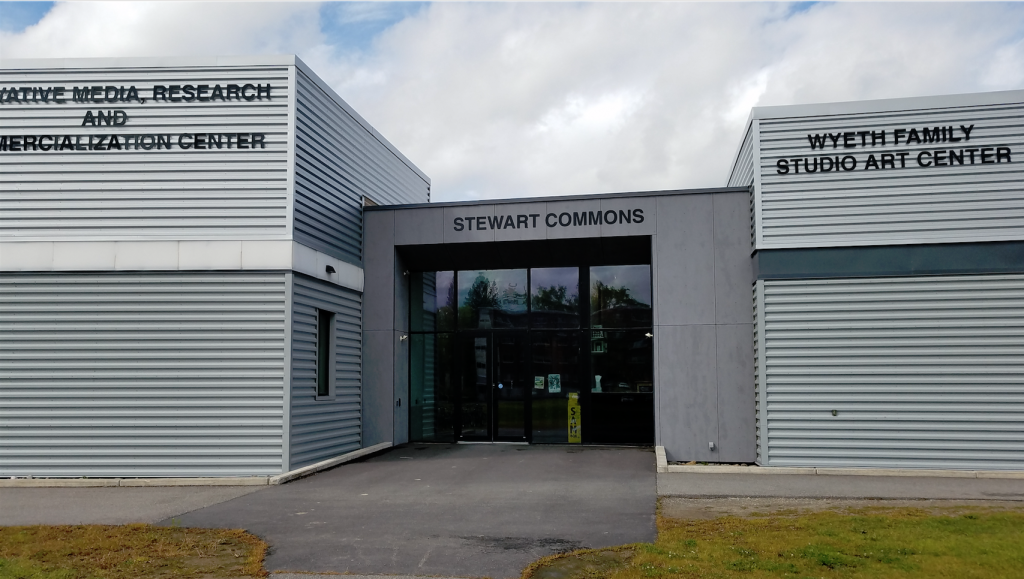
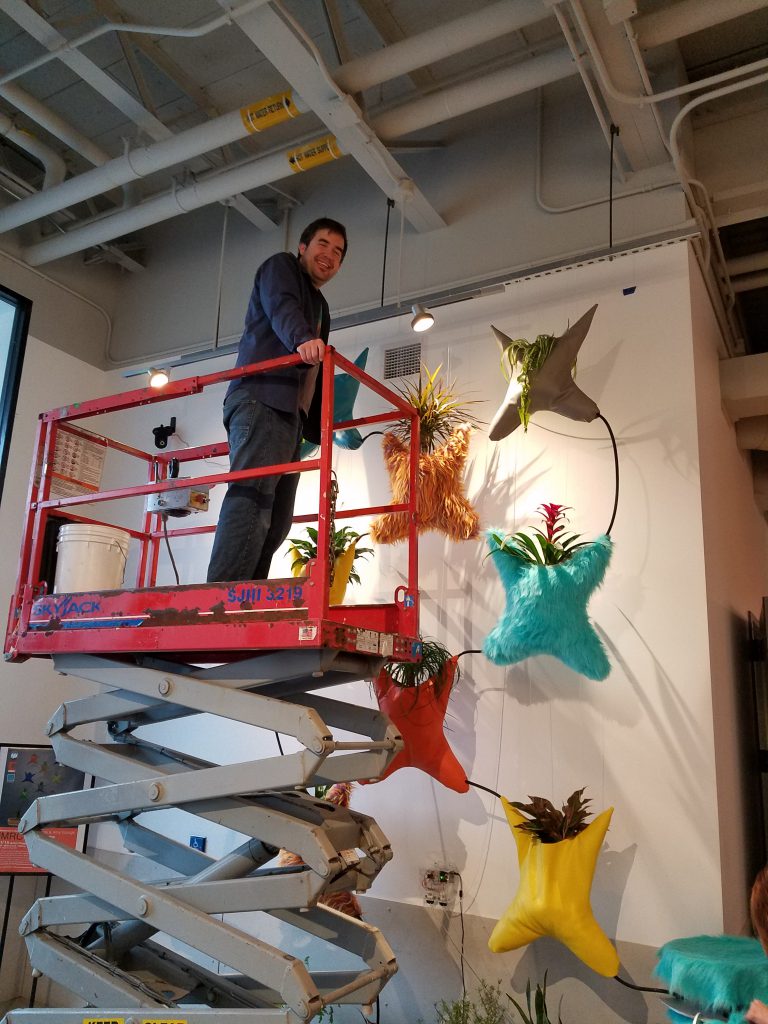
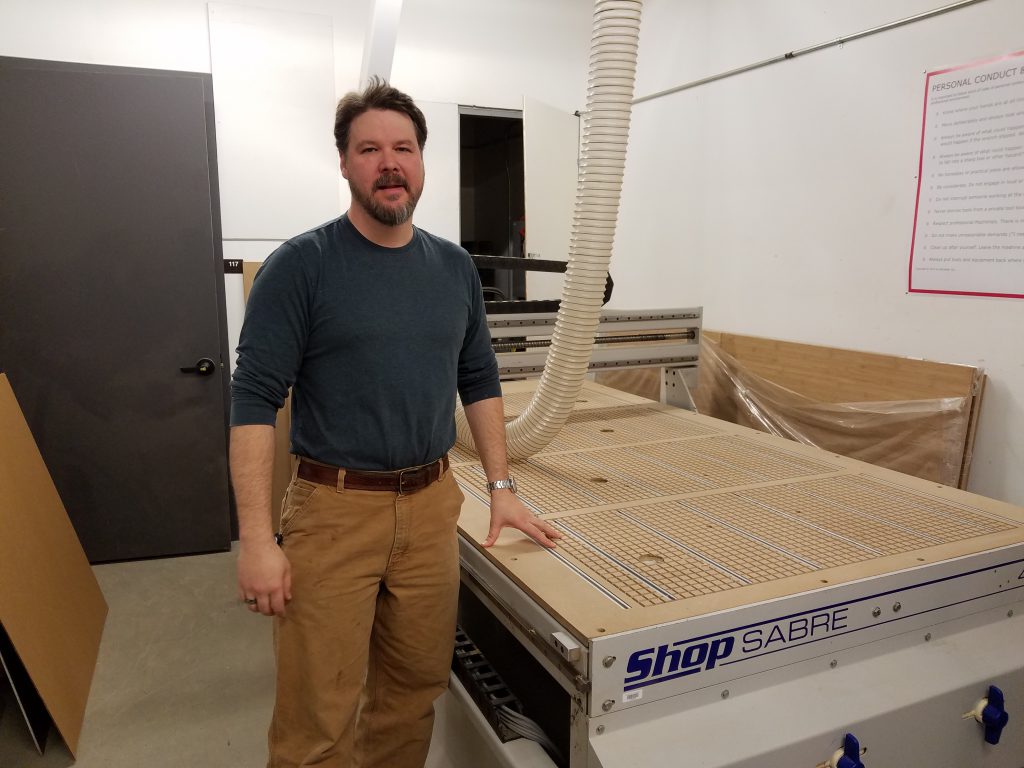
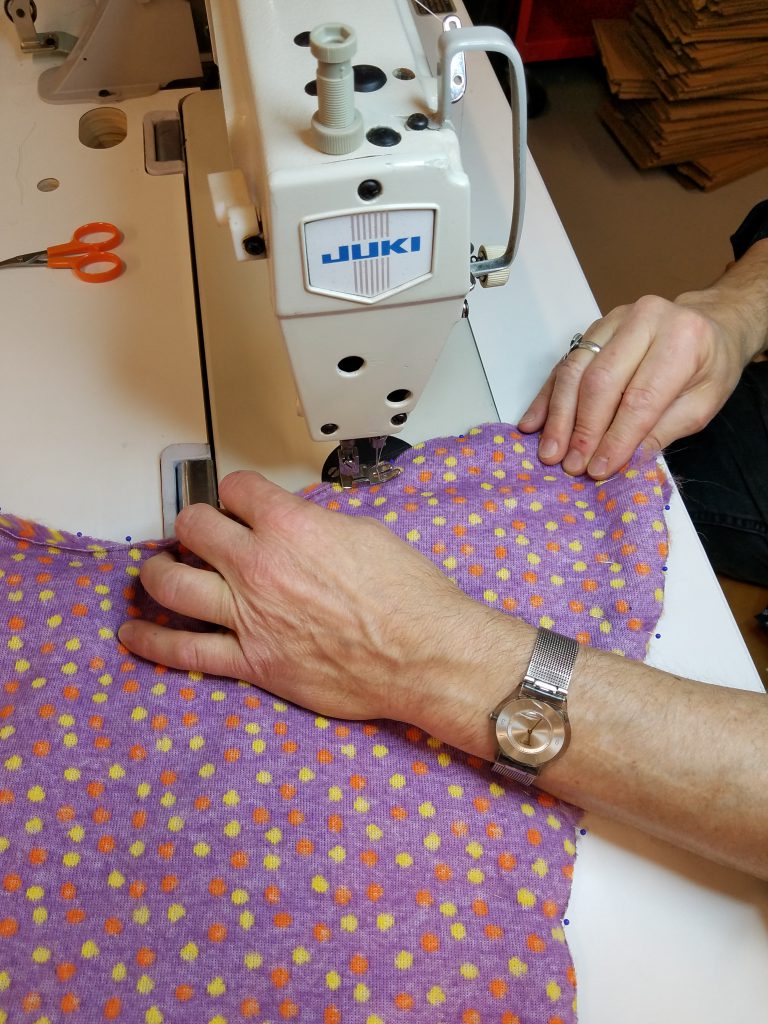
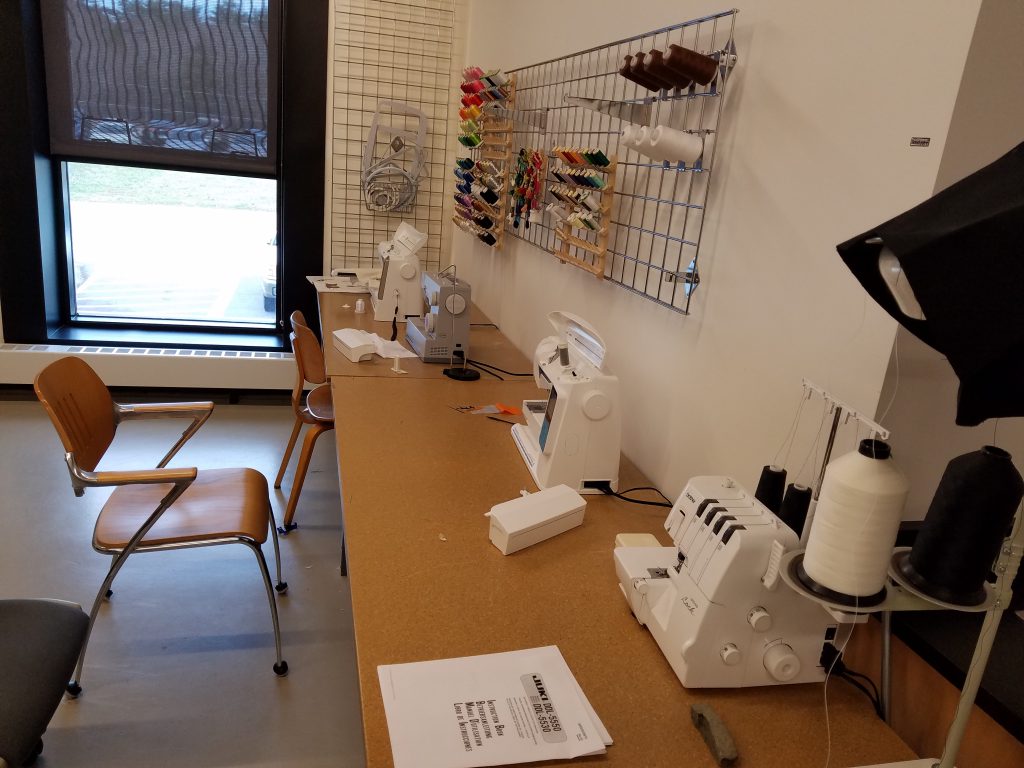

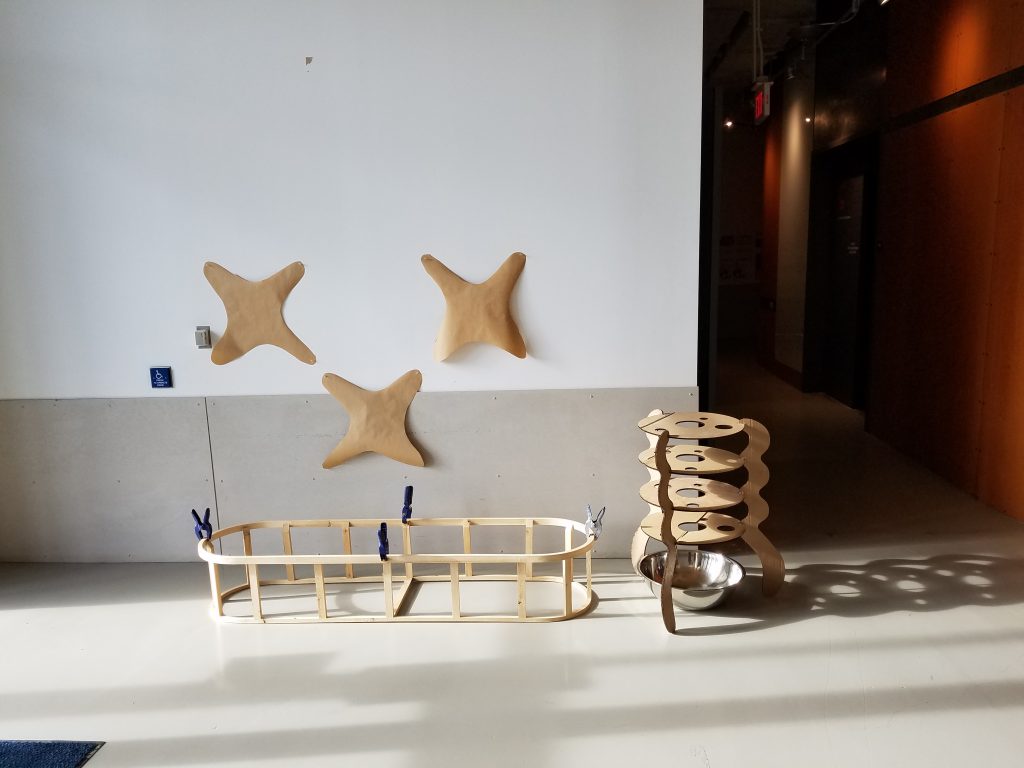
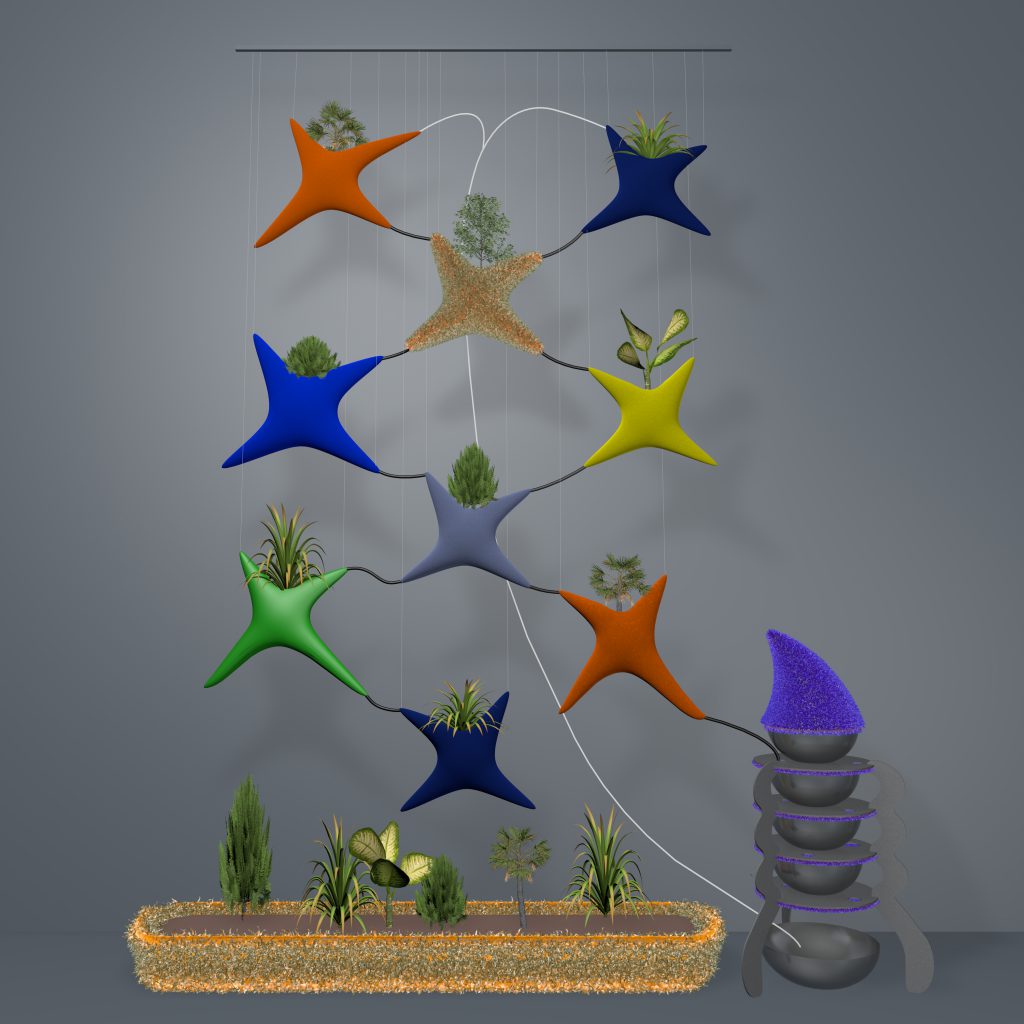
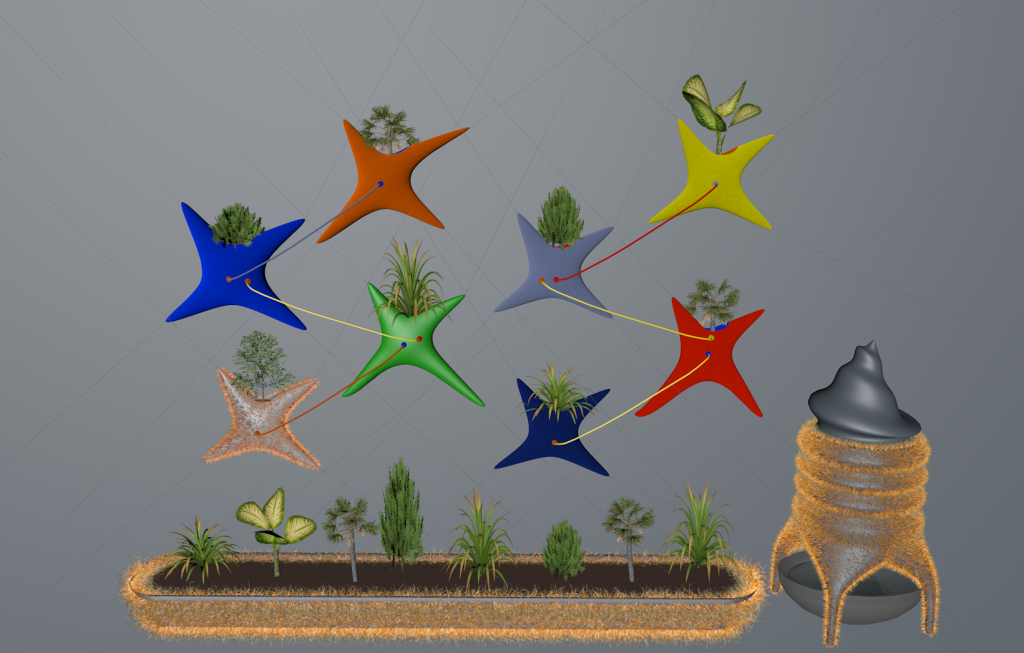
Interior of the space where the Machine Garden will integrate itself with the artificial and natural lungs of the building.
Special Thanks to the Director of IMRC Gene Felice and the University of Maine for this invitation and commission.
